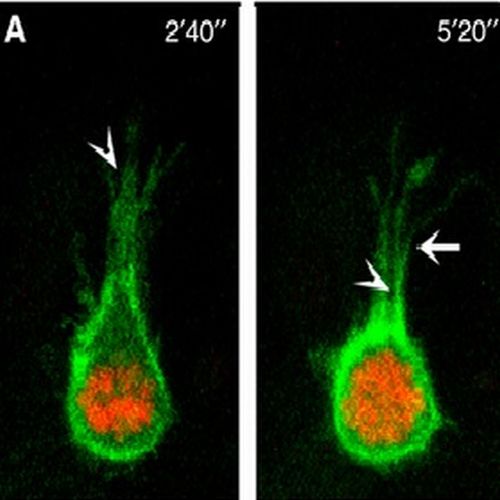Cytokinesis of neuroepithelial cells can divide their basal process before anaphase.
Neuroepithelial (NE) cells, the primary stem and progenitor cells of the vertebrate central nervous system, are highly polarized and elongated. They retain a basal process extending to the basal lamina, while undergoing mitosis at the apical side of the ventricular zone. By studying NE cells in the embryonic mouse, chick and zebrafish central nervous system using confocal microscopy, electron microscopy and time-lapse imaging, we show here that the basal process of these cells can split during M phase. Splitting occurred in the basal-to-apical direction and was followed by inheritance of the processes by either one or both daughter cells. A cluster of anillin, an essential component of the cytokinesis machinery, appeared at the distal end of the basal process in prophase and was found to colocalize with F-actin at bifurcation sites, in both proliferative and neurogenic NE cells. GFP-anillin in the basal process moved apically to the cell body prior to anaphase onset, followed by basal-to-apical ingression of the cleavage furrow in telophase. The splitting of the basal process of M-phase NE cells has implications for cleavage plane orientation and the relationship between mitosis and cytokinesis.

- EMBO J. 2008 Dec 3;27(23):3151-63
- 2008
- Cell Biology
- 18971946
- PubMed
Enabled by:
